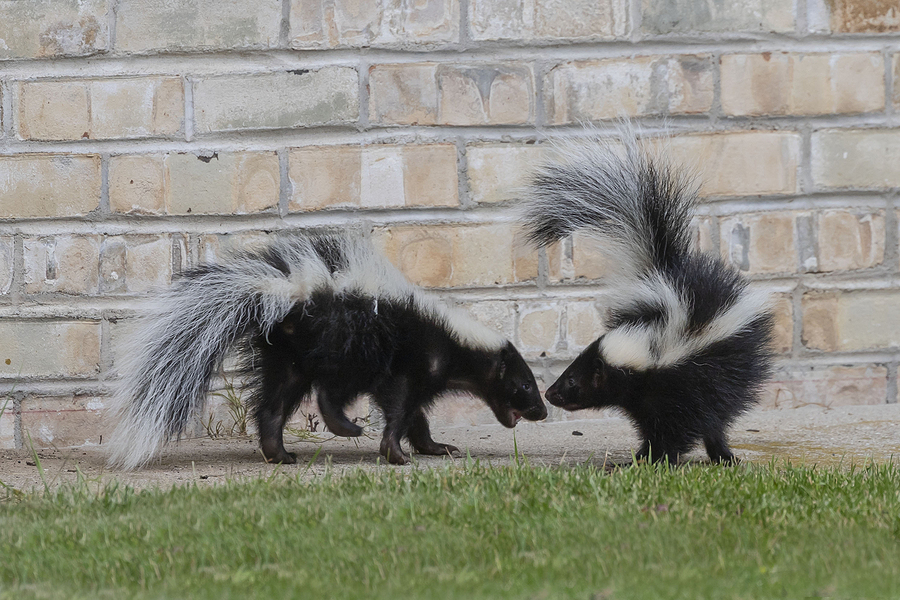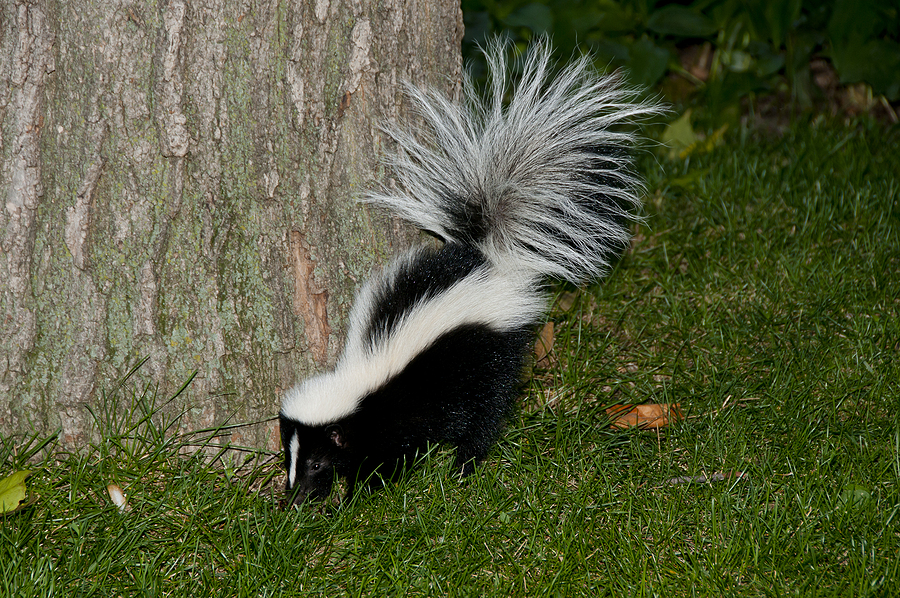Skunks, with their distinctive black and white coloring and pungent odor, can be a real nuisance when they decide to take up residence in your yard or under your house. Their scent marking is not only unpleasant but can also pose a threat to pets and small children. If you’re in a situation where these creatures have made themselves a little too at home, it’s time to implement a few effective skunk removal strategies.
This blog post will provide you with comprehensive insights into skunk control and introduce you to some safe and effective skunk repellents. Let’s embark on this journey to reclaim your space from these unwelcome guests.

Identifying a Skunk Infestation Problem
The first step to skunk removal is properly identifying the problem. You must assess the situation and determine whether you have a single skunk or an entire family living on your property. This will help you determine which strategies are best suited to address your particular problem and allow you to devise a more effective plan of action.
Humane Skunk Removal Methods
Since skunks are typically non-aggressive animals, it’s best to try and remove them using humane methods. You can set up a live trap near the entrance of their den and bait it with food such as sardines or tuna. Once the skunk is trapped, you can release it in an appropriate location far away from populated areas.
Another humane option is to use exclusion techniques such as fencing or one-way doors. By blocking off the entrance of their den, you can force them out while also preventing them from returning. This strategy does require patience as it may take a few weeks for the skunk to find an alternate place to live.
Safely Controlling Nuisance Skunk Populations
It’s not enough to simply remove the skunks from your property. It’s important to also take steps to limit their population growth by implementing a few preventive measures. For starters, you should practice good sanitation and eliminate any sources of food that may attract skunks. This includes pet food, bird seed, unsecured garbage bins or compost piles. You should also plug up any holes or tunnels in the ground where a skunk could make a den.
Skunk Repellent and Deterrents
There are various commercial skunk repellents on the market such as ammonia, predator urine or motion-activated sprinklers. Once applied, these products can effectively drive away skunks and discourage them from returning. You can also use homemade skunk repellent such as a mixture of vinegar and water, garlic or cayenne pepper spray. When sprayed near the entrances of burrows, these solutions are just as effective in preventing skunks from entering your property. However, you may need to reapply the solution every few days for it to remain effective.
Professional Wildlife Control Assistance
If all else fails, you may need to call in professional animal removal and control company help. A qualified wildlife removal expert can take the necessary steps to humanely trap skunks and remove them from your property. They can also provide long-term solutions for keeping them away. Never attempt to touch, trap, harm, or kill a skunk under any circumstances – unless you are properly and legally licensed to do so.
Safety Considerations
It’s important to keep safety top of mind when dealing with wild animals such as skunks. Make sure to wear protective clothing such as long sleeves and gloves and keep your distance when removing the skunk from its den. Additionally, never attempt to handle a skunk or transport it in your car as this can lead to serious injury. If you have any questions about skunk removal or need professional assistance, don’t hesitate to contact a certified Tennessee wildlife expert near Nashville. With their help, you can quickly and safely get rid of any unwanted skunk visitors.
In Conclusion
By applying these tips and strategies, you should be able to address your skunk problem with ease. Remember to take preventive measures to stop skunks from returning and use humane methods whenever possible for skunk control. With the proper steps in place, you can reclaim your property and keep it safe from these smelly pests. Skunks may be unpleasant, but they don’t have to be permanent residents of your property. By taking the time to research skunk removal strategies and implementing them correctly, you can reclaim your space and keep it safe from any future intruders.
Get rid of your nuisance skunk problems with our advanced critter control solutions! Contact Smoky Wildlife Control at 615-610-0962 for TWRA licensed skunk removal and control in Nashville, Tennessee, and surrounding counties. We serve residential and commercial clients.
Related Posts:
What To Do If You or Your Pet is Sprayed By a Skunk
How to Get Rid of Skunks in Spring
Best Methods for Outdoor Skunk Control




